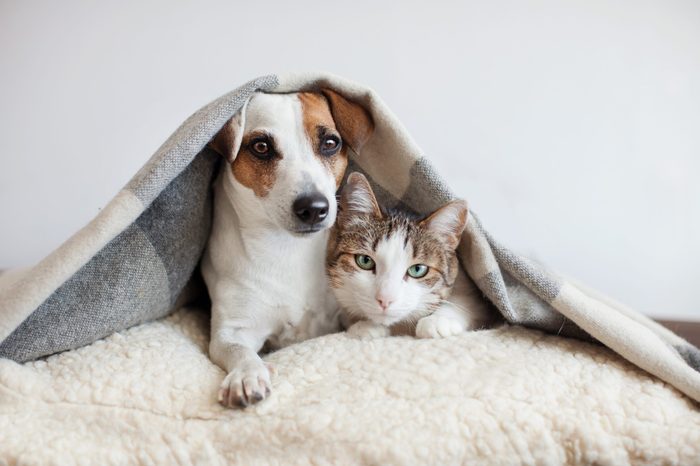
Why your pet’s weight matters
Being overweight isn’t just a people problem. It’s a problem that’s affecting the American pet population in a big way. In 2018, the Association for Pet Obesity Prevention found that an estimated 56 percent of dogs and 60 percent of cats were either overweight or obese. And while a chubby pet is certainly just as adorable and lovable as any other animal, you shouldn’t ignore this issue. Pets with weight woes can experience the same health consequences as humans, including an increased risk of diabetes, kidney disease, cancer, arthritis, and high blood pressure. The trouble is, pet parents often don’t know how to determine whether their fur baby is overweight. Well, not anymore. This veterinarian-approved checklist can help you figure out if your pet is at a healthy weight—or needs an intervention.
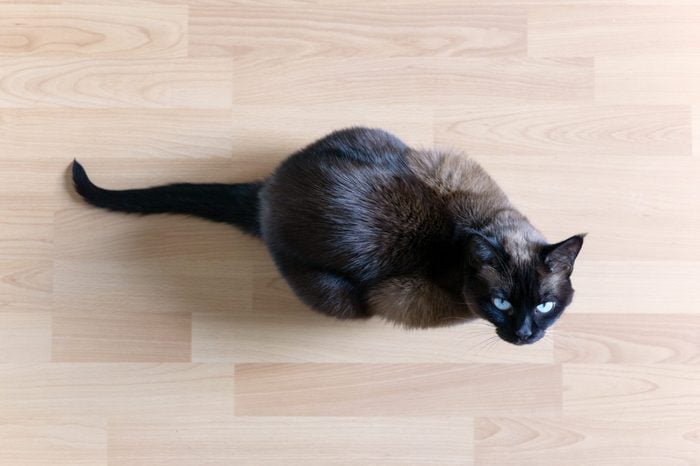
You can’t see a distinct waistline
We know, we know: Your furry BFF is the most perfect, most beautiful, most wonderful pet in the whole wide world. While that may be true, try to be objective for a moment—at least when it comes to the weight issue. The first step: Get a bird’s-eye view of your dog or cat and see if you can spot a tuck at the waist. If not, this is your first clue that there could be a problem, says Emi K. Saito, VMD, a veterinary epidemiologist with Banfield Pet Hospital in Vancouver, Washington. If that’s the case, make sure to check out these proven tips to help your pet lose weight.
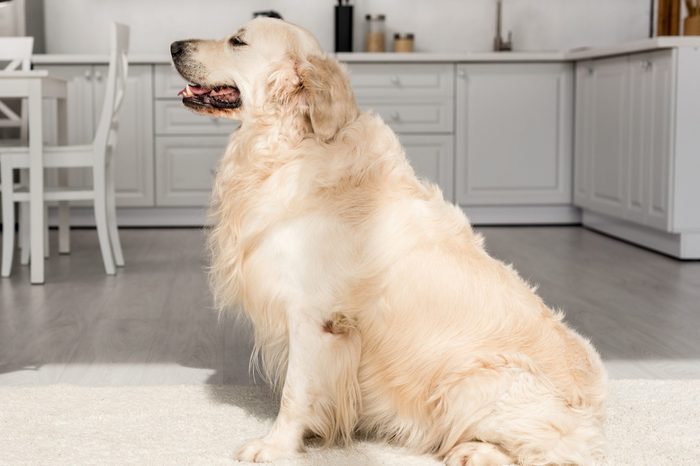
Your pet doesn’t have a six-pack
While your pet’s stomach will never look like an athlete’s chiseled six-pack, of course, it should have some delineation. For this weight check, look at your pet from the side instead of the top. You should be able to see a nicely tucked abdomen. “If your pet’s shape looks like one straight line without any curve or tuck, this may indicate too much weight,” says Callie Harris, DVM, veterinary communications manager for Nestlé Purina PetCare in Atlanta.
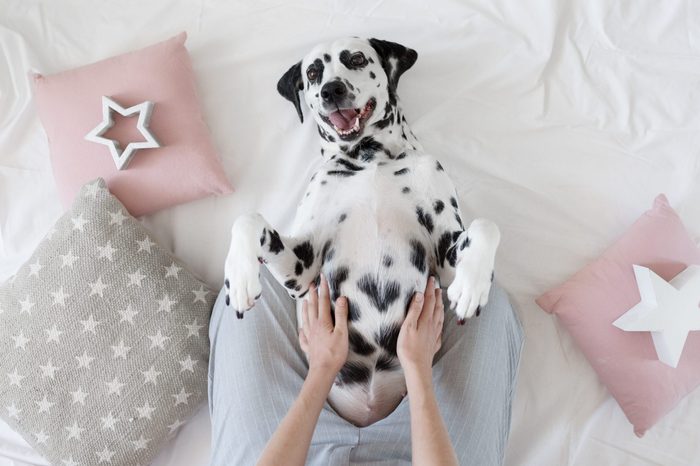
You can’t feel your pet’s ribs
You can also determine if your dog or cat has a weight issue during your next cuddle session. Simply place your hands gently around your pet’s chest. What are you checking for? “You should be able to easily feel—but not see—your pet’s ribs,” Dr. Saito says. If not and you have to dig deep, there may be too much fat covering those ribs. Your pet’s weight gain isn’t the only health issue that can take you by surprise. Here are the silent signs your “healthy” cat is actually sick.
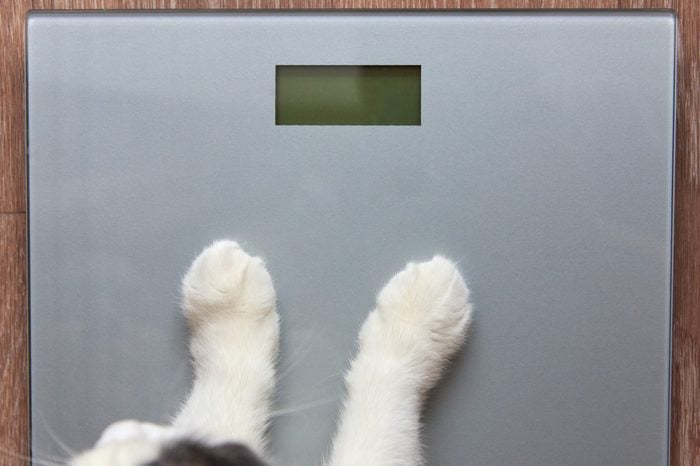
The number on the scale is climbing
While weight alone may not be enough to determine if your pet is overweight, it’s still smart to get your pet on a scale periodically. “It can be a helpful tracker to see if your pet is gaining—or even losing—weight,” says Dr. Harris. How often should you be weighing your pet? Every few months should suffice. If you don’t have a scale at home, pet stores like PetSmart often have scales that you can use for free.
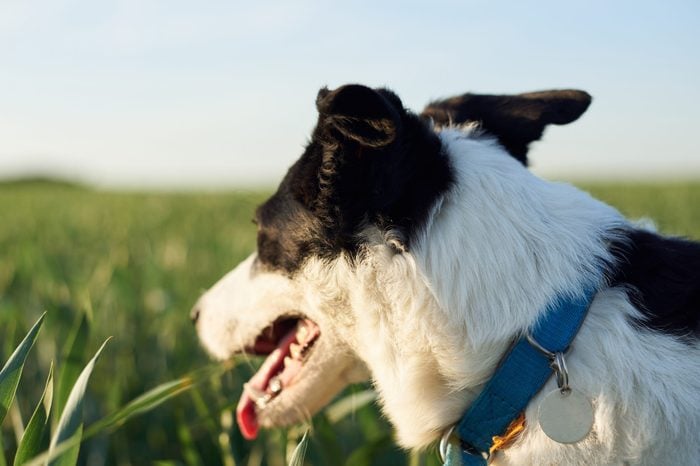
Your pet’s collar is suddenly too tight
Once your fur baby is fully grown, he or she shouldn’t do much more growing. That’s why it’s a red flag if your pet’s collar seems to be getting “tired” and needs to be adjusted to a larger size, says Dr. Saito. It could mean that your pet has been gaining weight. Wondering what you should be feeding your pooch? These are the dog food brands veterinarians feed their own pets.
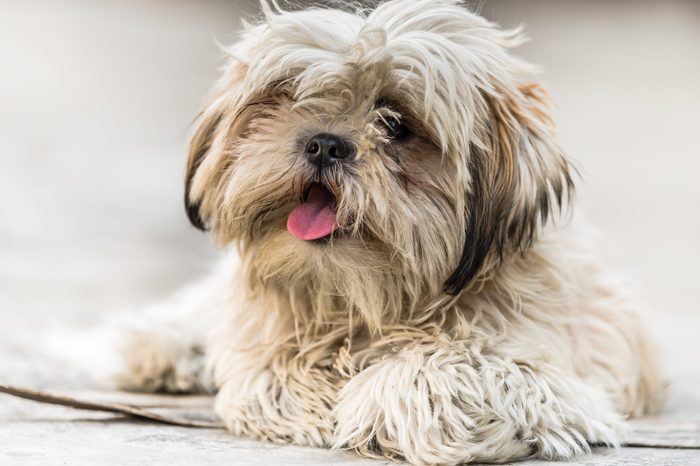
Your pet’s breathing is labored
Panting is a normal part of being a pet, but if all activities seem to make your pooch or kitty pant excessively, there could be a problem. One big clue, says Dr. Saito, is if this happens after even low-intensity exercise. That panting indicates that your pet is having trouble breathing, which could be related to excess weight. And if that’s not the cause of the breathing issues, you should still definitely pay a visit to your vet.
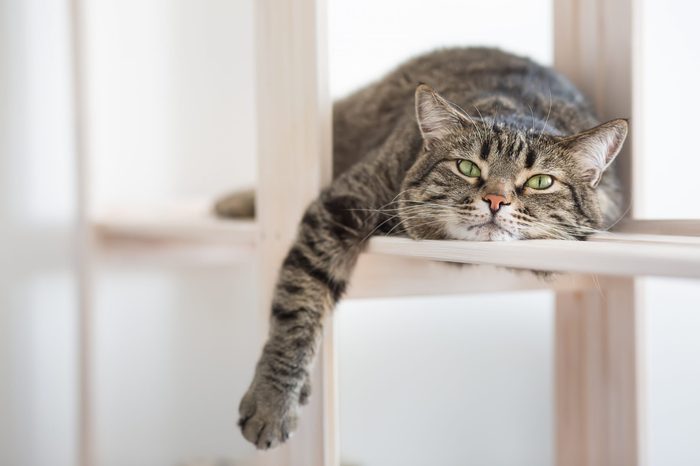
Getting around is a challenge
Is your pet is having trouble getting in and out of the car, up and down furniture, and even up and down the stairs? While age or other medical issues can be a factor, so can weight. When pets weigh more than they should and especially if they’re obese, says Dr. Saito, they often have joint pain. As a result, that pain could make them move gingerly. And even without joint pain, the extra weight can slow them down. By the way, this is how much exercise your dog really needs.
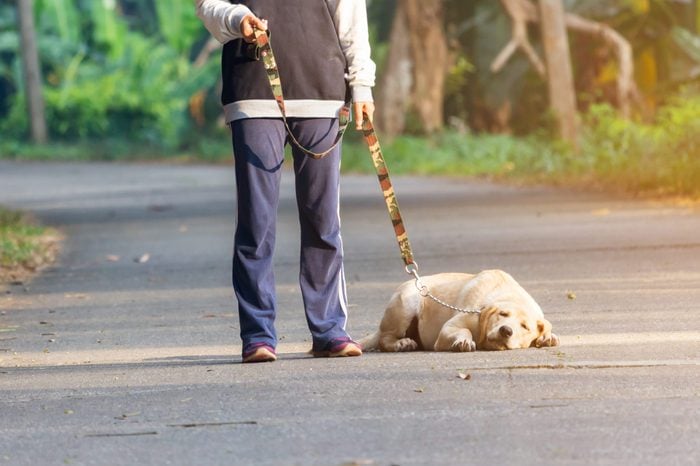
Your pet has lost interest in physical activity
If your pup forgoes a game of fetch or your cat no longer plays with the wand toys she used to love, check that weight. Whether you’re a pet or a person, carrying too much weight can be exhausting. That can make physical activity too much of an effort and a lot less appealing, Dr. Saito explains.
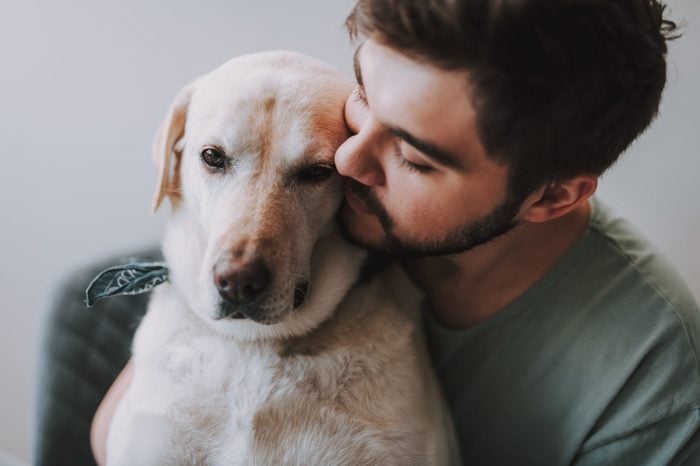
You’re in denial about your pet’s weight
If you’re constantly shrugging off comments about your pet’s weight from family, friends, and even your vet, you could be in denial. “Pet parents often don’t want to believe their pet is really overweight,” Dr. Harris says. So what? Well, that’s a big, fat indication that your pet could have a problem—and that it will continue to be a problem. But by acknowledging the issue and making the necessary changes to your pet’s diet or exercise routine, you can get your pet’s weight—and health—on the right track. Make sure to check out these trusted tips to help your pet live longer.
